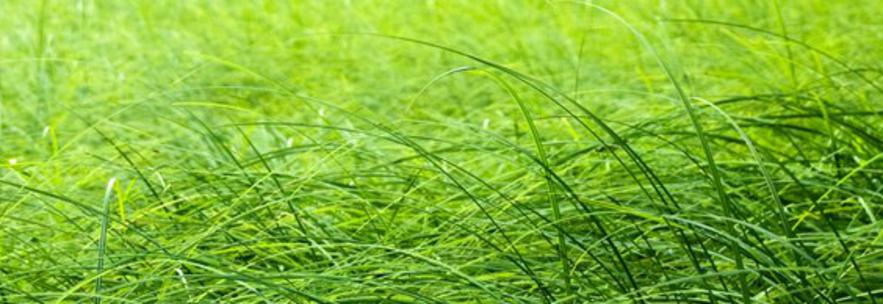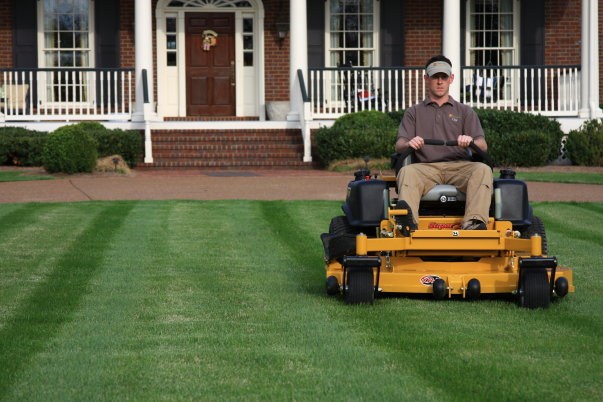Strategies to Help Eliminate Weeds
by David Steg on 01/27/16Weeds, weeds, weeds; everybody has them, but nobody likes them! As a homeowner, we pride ourselves in our well kept lawns, but nobody said it was easy to keep it weed free. Sometimes it feels like we can do all the right things and they still come. Today I will go over a few strategies that will help simplify your weed control.
Mow at the correct height:
Each type of grass has an ideal cutting hight, which helps promote optimal health. I will provide a table to show the appropriate cutting height for the most common grasses, and it is important to make sure we don’t cut below that ideal height. Also, longer grass will help prevent weeds because it can provide shade to the ground. This will keep the ground cooler and will retard the germination of weed seedlings. Also, when the grass is taller the weeds have a harder time getting additional sunlight and will not grow as quick. Although mowing is nobody’s favorite chore, it is important to mow when your grass needs it. The best time to mow is when the grass is 1/3 above the ideal cutting height. Depending on the weather, this can mean mowing twice a week, or maybe once every two weeks. When we mow our lawns, we are clipping off weed seed heads before they an take over our yards.
Ideal Mowing Heights:
Cool Climate Grasses:
-Bent grass - 1/4 to 3/4 inches
-Tall Fescue - 1-1/2 to 3 inches
-Kentucky bluegrass - 1-1/2 to 3 inches
-Perennial ryegrass - 1-1/2 to 3 inches
Warm Climate Grasses:
-Bermuda grass- 1/2 to 1 inch
-Blue grama grass - 2 to 3 inches
-Buffalo grass - 2 to 3 inches
-Carpetgrass - 1 to 2 inches
-St. Augustinegrass - 1 to 3 inches
-Zoysia grass - 1/2 to 1 inch
Correctly Identify Your Weeds:
Most consumers will go to the store and grab the largest bottle of weed kill, but this won’t typically solve your problems. It is important to know what kind of weeds you have and plan your attack accordingly. The three common classifications of weeds are broadleaf, perennial grassy weeds, and annual grassy weeds. Each type of weed will require a different treatment type and application method.
How to Control Broadleaf Weeds with the Least Amount of Herbicide:
There are a few different methods to control broadleaf weeds, and usually less is more. When going to the store, be sure to select a broadleaf herbicide when trying to tackle these pests. It is also key to get the smallest applicator necessary to complete the job, because a little goes a long way.
Some yards will get a weed here or there, so treating the whole yard would be unnecessary. Spot treating the weeds would do the job with the use of a trigger- controlled, pump-up pressure sprayer. Should you have weeds in larger patches, it is best to treat those with a standard 1 or 2 gallon tank sprayer. Lastly, if your yard is out of control, then a more aggressive approach will be needed. The best method to treat this situation is with a dial sprayer attached to a garden hose. It is both fast and efficient. It is important to cover all flower beds, since this type o herbicide will kill anything that has leaves on them.
Kill Perennial Grassy Weeds One by One:
Quack grass is one of the best examples of a perennial grass that will come back each year, just like your normal grass. They have extensive root systems and can also spread through their abundant seed pods. Pull grassy weeds by hand will result in pulling a small portion of the root system. The only true solution to eliminate these weeds is the use of a “nonselective” plant killer (Ex. Roundup). Using this type of plant killer will kill everything in the area. To prevent killing the grass around the area or other plants, it’s best to wipe the blades of with a nonselective herbicide. Within a few days, most of the weedy grass will have died. Additional treatments may be needed for any surviving plants.
How to Control Crab Grass:
Crab grass is a very common annual weedy grass that dies at the end of the season, but spreads it’s seeds for early germination in spring. The best method to keep grab grass under control is by applying grab grass preventer between the first few mowings. This treatment will prevent the seeds from germination, but timing is everything.
For the best results, make notes where the crab grass seems to thrive. Making these notes will allow you to spread product where it is needed, which will save time and money. Crab grass is attracted to areas where the ground warms quickest, especially by concrete surfaces.
There are three methods to removing crab grass:
- Hand-pull the clumps so that it is unable to reseed itself. Add new grass seed if the patches create bare spots in the yard.
- Let it grow and wait until the following spring to treat, since the weed will die in the winter.
- Treat the clumps with a post- emergent crab grass killer. This will be most effective for younger plants, but once the seed heads form in the late summer this method will not work. It will be better to wait until the spring to apply a preventer.
Don’t Fight Weeds:
Sometimes there are areas where grass won’t grow. Don’t spend hundreds of dollars in product to force what mother nature doesn’t want. Applying mulch or rock is a great alternative to areas where grass won’t grow. It is best to place down a weed barrier before applying one of these medians.
Comments (0)




